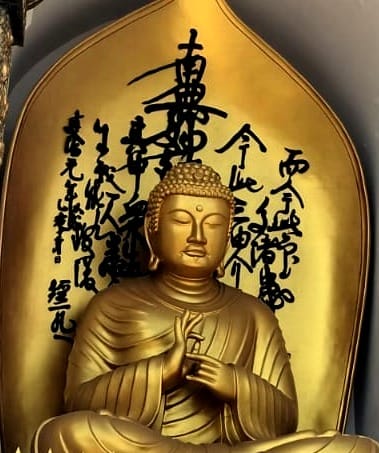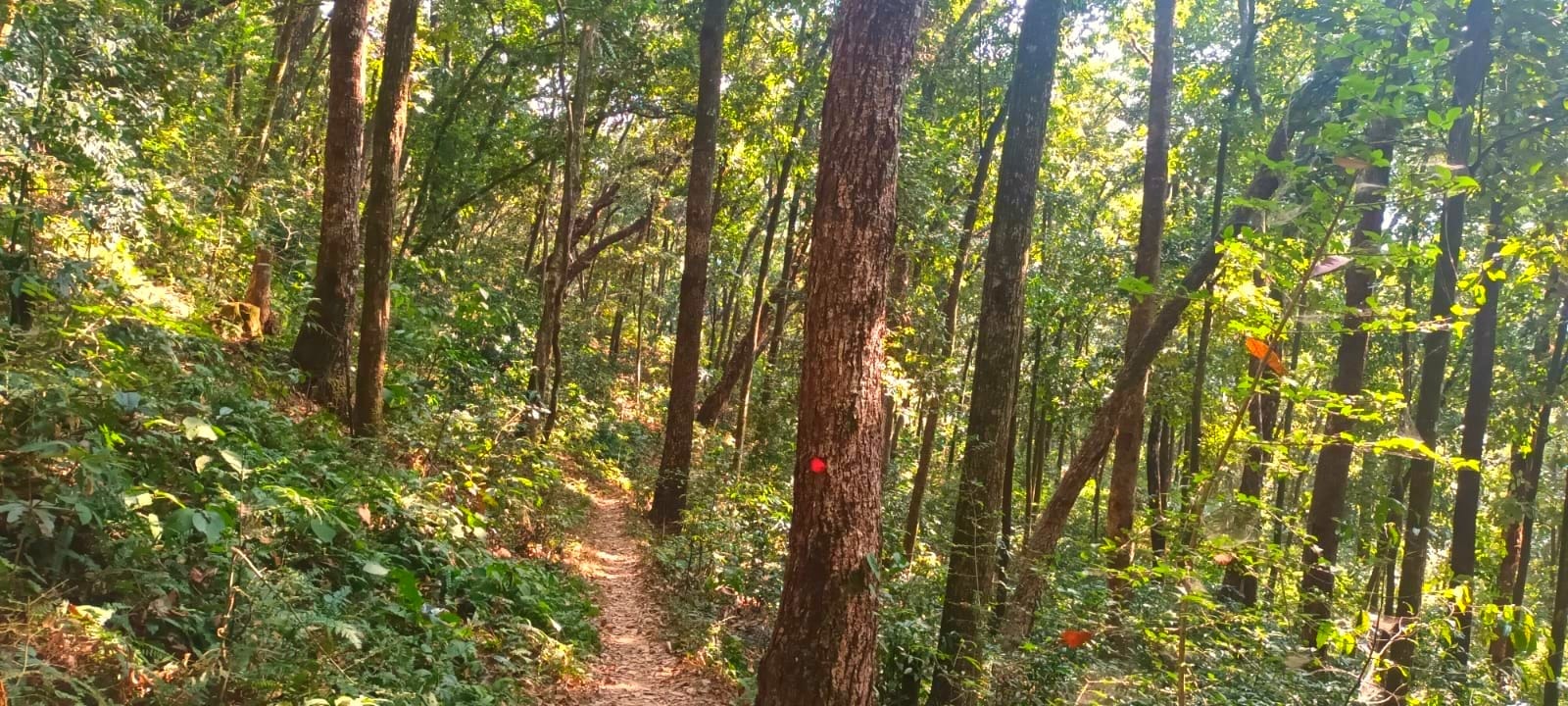Resting on the top of Anadu Hill in Pokhara, the Bishwa Shanti Stupa, also known as the World Peace Pagoda, commands attention as a prominent landmark. Providing an enchanting outlook of the majestic Annapurna Mountain Range in the background, it offers visitors breathtaking views of Phewa Lake and the entirety of Pokhara city.
One among the eighty pagodas scattered globally, this was constructed under the guidance of the Japanese Buddhist monk Nichidatsu Fujii which serves as a striking symbol of global peace.
This location is perfect for the astonishing experiences with both sunrise and sunset visible from its elevated position.
Architecture
There are two peace pagodas situated in Nepal, one in Lumbini, the birthplace of Gautam Buddha, and another one in Pokhara. The peace pagoda in Pokhara is the first pagoda constructed in Nepal and was the 71st among all peace pagodas. It was built in 1973 by locals of Pokhara and Nipponzan-Myōhōji-Daisanga, which is an activist group founded by Nichidatshu Fuji, for the world wide peace movement. Morioka Sonin took the lead in launching the construction while the inaugural deputy defense minister, Min Bahadur Gurung generously contributed the land for the pagoda. On September 12, 1973, Nichidatsu Fujii initiated the project by laying the foundation stone and placing the relics of Lord Buddha. Subsequently, on November 28, the prayer hall featuring a statue of Lord Buddha and the Guest House were constructed. With the steadfast support from various sources, The Peace Pagoda was successfully completed and was inaugurated in 1999, welcoming the public for the first time.
The place is serene and peaceful standing 115 feet tall on a 344 feet diameter. The architecture makes the pagoda visible from a distance, standing gigantic with grace and with unique beauty. The white pagoda is built in a traditional pagoda style and has two tiers for the tourists and the religious visitors.

The second tier displays four statues of the Buddha as souvenirs from different countries. The first one is “Dharmachakra Mudra” from Japan, second is “Bodh Gaya” from Sri Lanka, third one is “Kushinagar” from Thailand and lastly “Lumbini” from Nepal. Each statue represents the important events related to Lord Buddha and were named according to where they took place. At the very top of the Pagoda, there is a “Gajur (Pinnacle)” which holds the crystal stone from Sri Lanka symbolizing intellect and grace. Below the gajur, “Dharmachakra” is placed which signifies the wheel of life, Dharma and the teachings of Buddha. There is a statue of Min Bahadur Gurung adjacent to the Peace Pagoda for his great contribution. Buddhist rituals take place on a daily basis in the prayer hall. On important dates, like Buddha Purnima, large pujas are also performed.
How to get there?
There are four modes of transportation to get to the Peace Pagoda.
- By Road
You can get a taxi or a scooter from the Lakeside which will take about half an hour followed by a ten minutes walk in the stairs leading up to the Peace Pagoda. There are public transportations available as well.
- By Boat
Another option is getting on a small boat from the shore of Lakeside across the Fewa Lake. It will take around Rs. 800 for the ride. On reaching the bank, the hiking path goes through a thick forest with uphill stairs. The revived nature walk up to the Shanti Stupa can be quite refreshing. It will take about an hour to reach the top.
- Hiking Trails

If you love hiking, you can start walking from the Damside through a thick forest. It will take you about three to four hours to reach the top. Hiking level is considered to be difficult due to steep slope.
- Cycling Tracks
You can rent a bicycle from the Lakeside and start your journey from there.
There is no entrance fee to enter the Peace Pagoda and is open to all the visitors and pilgrims from around the world. If you would like to donate, there is a donation box right in front of the stairs to the Stupa. You can not wear shoes in the premises of Stupa, so it is better to bring socks rather than walking barefoot. You also have to maintain peace in the premises.
Things to Do
When you reach the top, you can see the beauty of the Himalayas in the background and Phewa Lake and the whole Pokhara city on the bottom. Apart from the scenic view, it is also a religious destination for those who seek peace for their soul through Yoga and meditation. Many tourists come here to indulge in the tranquil and noiseless surroundings of the Stupa.
The hilltop provides a splendid view of sunrise and sunset. The picturesque beauty is quite captivating and the tranquil vibe of the pagoda is worth a visit for those seeking inner peace.
If you are hungry, there are many restaurants and shops available. You can buy souvenirs of the stupa, feast out and enjoy nature. If you are craving for more adventure, you can hike for an hour up to the Lord Shiva statue in Pumdikot or take a ten minute ride from the Stupa.
Conclusion
Whether you are in search of peace and serenity or you want to explore nature’s hidden gems, Pokhara’s Peace Pagoda stands on the hill- top as a tranquil symbol of global harmony and unity. It promotes peace and coordination to all humanity. People can reflect on the importance of inner peace and spiritual enlightenment in its tranquil surroundings. The World Peace Pagoda encourages people from diverse backgrounds to come together in a pursuit of a more peaceful and interconnected world.








